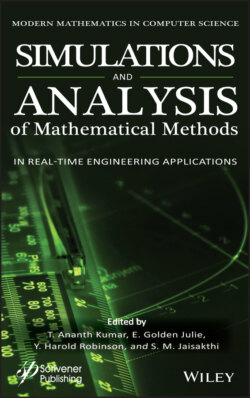Читать книгу Simulation and Analysis of Mathematical Methods in Real-Time Engineering Applications - Группа авторов - Страница 33
2.1.2 Edge Architecture
ОглавлениеAll the edge activities are controlled by two-tier architecture, so it works properly in time-sensitive systems. The design of two-dimensional structures focuses primarily on efficiency, application management, and edge management.
The edge network aims to reduce the data strain by providing computation away from data centers towards the network’s edge. To provide services for cloud computing, an edge computing network is created by using smart objects and network gateways and decentralizing the data centers. The edge network consists of three layers, among which Edge devices are the first layer. Edge devices are the data providers that include user gadgets, e.g., sensors, machines, smartphones, and wearables, as shown in Figure 2.1. They are responsible for data collection and delivery [7]. Edge nodes, the second layer of the network layer, are the router, switches, and small/macro base stations responsible for computing operations and data processing and data routing [9]. The third layer is the cloud that consists of data centers, servers, databases, and storage, and is responsible for data analytics using Artificial intelligence, visualization, and other high computational requirements [9].
Figure 2.1 Edge network.
The three-tier architecture, Edge Computing (EC), acts as a complement to cloud computing. It is appropriate for applications with sensitive time functions as well as activities that strengthen counting [10]. Critical time operations are managed on the margins, and computer consolidation tasks are performed in the cloud. The three-dimensional structure focuses primarily on the Interface between the cloud and end, as well as the assigned function. Edge computing is part of the cloud-based IoT system. Edge computing improves the performance of the IoT system. To understand the need for edge computing, we need first to understand cloud-based IoT functioning.
Then computing has been backed by the centralized network with cloud computing, which allows the users to consume large numbers at any time in different places based on the pay concept. In the concept of cloud computing, there is a frequency of communication between the centralized server and user models such as smartphones, smartwatches, etc. [5].
The physical distance between the end device and the cloud server is typically vast. It leads to an increase in response time because of the considerable distance. In cloud computing, there are many challenges to provide uninterrupted service by having a good communication link to the end user, especially when the distance between the cloud server and end device is large and the device is on mobility. For example, a person with a mobile who moves from one place to a different place requires a large number of cloud servers with short response time and depends on the stability of cloud nodes. It triggers a lot of research – based on beyond the clouds towards the edge of the network, as shown in Figure 2.1 [8]. This Edge Computing system overcomes the challenges noted above of a cloud-based IoT system. As shown in Figure 2.1, edge network nodes are formulated in such a way they will be close to the end device and doing part or full computation of cloud server by offloading the load from it. Since the computation is done locally, the system’s performance can be improved with significantly less response time.
An extensive literature survey on edge computing with different applications has been done to improve performance in a cloud-based IoT system.
